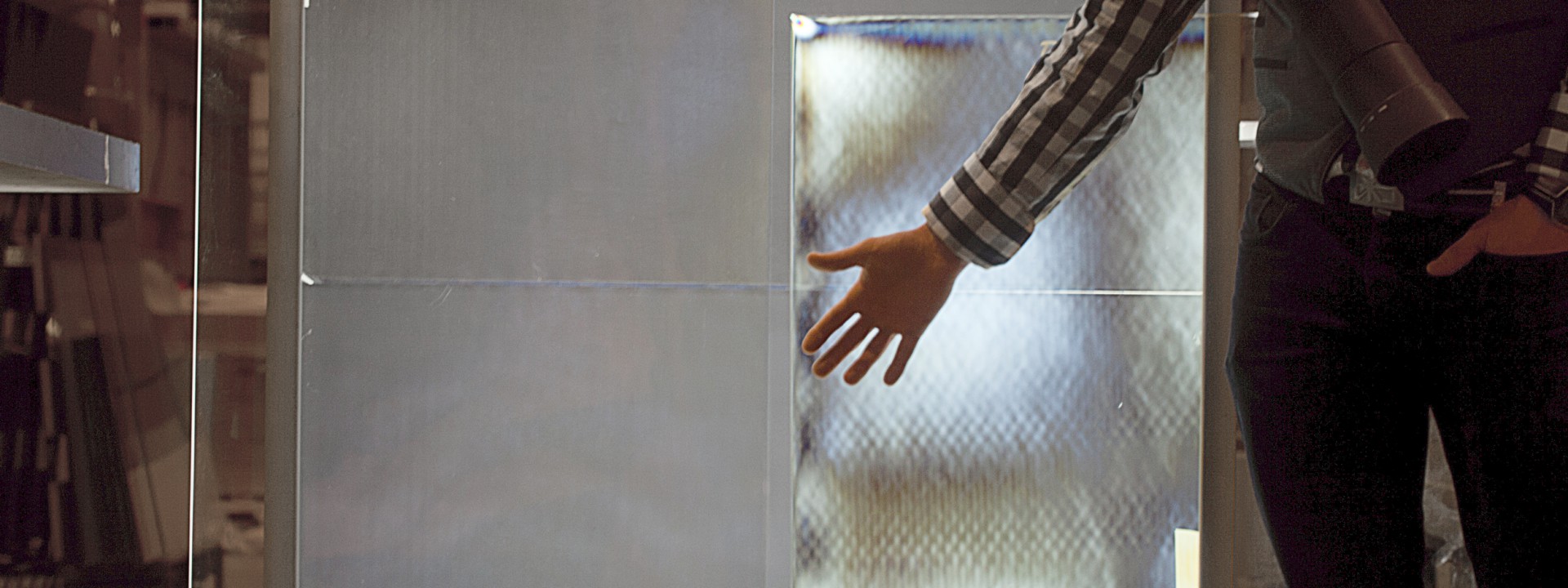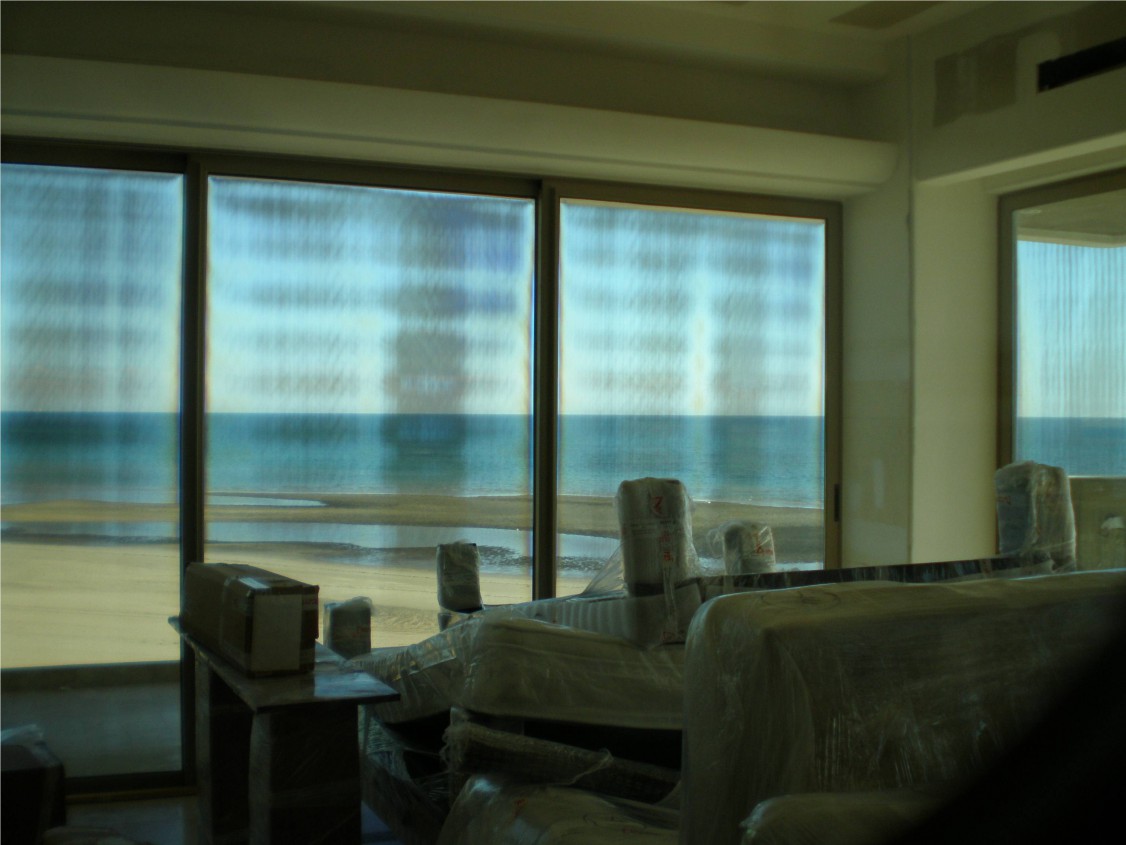
In recent years, I’ve been contacted more and more frequently by building designers with a photo of a façade with a weird stripe or pattern on it. The question I hear: «Is this acceptable and what can I do to get rid of it?»
Read more about the industry thoughts here and keep on reading this post if you want to get some actionable tips on how to get rid of it.
This phenomenon is called iridescence. Iridescence is a term for stress differences in tempered glass that become visible in certain lighting and viewing conditions. Sometimes this effect can be disturbingly visible. The phenomenon is more noticeable when:
Iridescence becomes even more visible with thick glass (8-15 mm) and with heat-strengthened glass. If the tempering process is not optimized in terms of condition, parameters and the tempering line itself, it will also affect the amount of iridescence.
Visible iridescence does not make the glass bad from a structural perspective, but it does make it look like low quality. It’s visible – and usually it should not be.

To understand how the iridescence can be minimized in a tempering line, it is crucial to understand what causes it. In short:
Iridescence is caused by uneven heating or uneven cooling in the tempering process.
This is already an important distinction. It is not only about heating, nor is it only about quenching and cooling. They both have an impact – so it is about the uniformity of both. If you heat the glass uniformly and quench the glass uniformly, you have no iridescence. However, that is only theoretical with heat-treated tempered glass.
People tend to think that iridescence is caused only by the quench. Surprisingly, the worst iridescence examples usually are caused in the heating section. So what impact does the heating then have? It has a major impact. If you create a temperature difference in the glass during the heating phase, it will stay there throughout the quench and show up as iridescence as a result. A good example of this is when local convection heating is too strong.
If you use local heating that is too strong, for example, with convection, you end up with a serious temperature difference that results in iridescence.
Quench also plays a large part in iridescence. All non-uniformity shows up as iridescence. This can be rollers conducting a cooling effect onto the glass, the quench nozzles blowing quenching air inconsistently to different parts of the glass and many other things.
Invalid Displayed Gallery
Now to the part you have all been waiting for. What you can do to minimize the iridescence in your tempered glass:
1. Identify what is causing your problem – your heating or cooling. Go back to the pictures in this post and compare these to your results. Start optimizing the process that causes the problems.
2. HEATING: Decrease your furnace temperature and increase your heating time. This will heat the glass more uniformly and increase your overall quality.
3. HEATING: Set the longest possible oscillation length. Utilize the «crawling function» in your furnace, if you have one, to minimize the stopping points. Make sure your furnace program supports alternating stopping points.
4. QUENCHING: Clean your quench nozzles. Make sure you don’t have any nozzles blocked.
5. QUENCHING: Optimize the first stopping point. Adjust your transfer speed to quench at a low level. Aim to have the first stopping point in as low temperature as possible.
As a bonus, I want to remind you to take good care of your machines. Running with broken heaters will impact your ability to heat the glass uniformly and thus your iridescence.
If you are in the process of buying a new line, make sure you have a so-called shifted design heating system with no parallel running lines to minimize this effect.
Did you find a solution to your problem?
If not, send us your question here.
Suscribirse al boletín de noticias de Glastory
Respondemos a sus preguntas sobre el procesamiento de vidrio. Háganos saber sus desafíos y nos comprometemos a hacer todo lo posible para ayudarle.
Comments are closed.